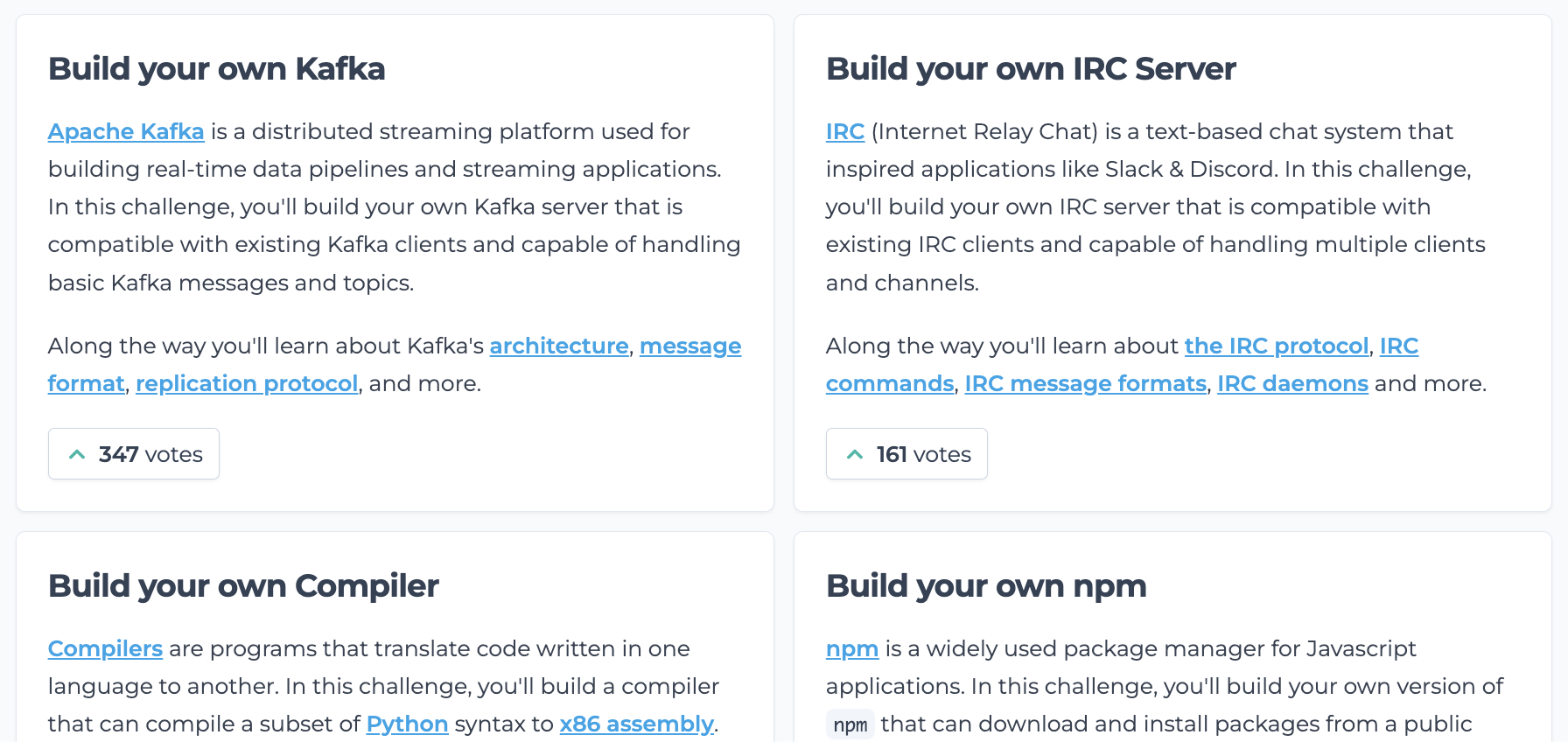Master Go.
Achieve mastery in advanced Go, by building real-world projects. Featuring goroutines, systems programming, file I/O, and more.
Discover concurrent programming in Go with goroutines, while also learning about TCP servers, network programming, and the Redis Protocol.
RDB Persistence
Replication
Streams
Transactions
HTTP is the protocol that powers the web. In this challenge, you'll build a HTTP server that's capable of handling simple GET/POST requests, serving files and handling multiple concurrent connections.
Along the way, we'll learn about TCP connections, HTTP headers, HTTP verbs, handling multiple connections and more.
HTTP Compression
This challenge follows the book Crafting Interpreters by Robert Nystrom.
In this challenge you'll build an interpreter for Lox, a simple scripting language. Along the way, you'll learn about tokenization, ASTs, tree-walk interpreters and more.
Before starting this challenge, make sure you've read the "Welcome" part of the book that contains these chapters:
- Introduction (chapter 1)
- A Map of the Territory (chapter 2)
- The Lox Language (chapter 3)
These chapters don't involve writing code, so they won't be covered in this challenge. This challenge will start from chapter 4, Scanning.
Parsing Expressions
Evaluating Expressions
Statements & State
A shell is a command-line interface that executes commands and manages processes. In this challenge, you'll build your own
POSIX compliant shell that's capable of interpreting
shell commands, running external programs and builtin commands like cd, pwd, echo and more.
Along the way, you'll learn about shell command parsing, REPLs, builtin commands, and more.
Navigation
Dive into the internals of Git. Discover how Git stores and moves around data, its transfer protocols, and more. A unique exercise in making network requests with Go.
DNS is a protocol used to resolve domain names to IP addresses. In this challenge, you'll build a DNS server that's capable of responding to basic DNS queries.
Along the way you'll learn about the DNS protocol, DNS packet format, DNS record types, UDP servers and more.
Learn about regular expressions and how they're evaluated. Implement your own version of grep in Go.
Backreferences
Learn about .torrent files and the famous BitTorrent protocol. Implement your own BitTorrent client in Go.
Magnet Links
Learn about B-Trees, the foundation of every relational database. Explore Go's API for reading/writing files, and handling custom file formats.
Apache Kafka is a distributed event streaming platform often used for high-performance data pipelines. In this challenge, you'll build your own Kafka broker that's capable of serving basic requests.
Along the way you'll learn about TCP servers, the Kafka wire protocol and more.
Concurrent Clients
Listing Partitions
Consuming Messages



